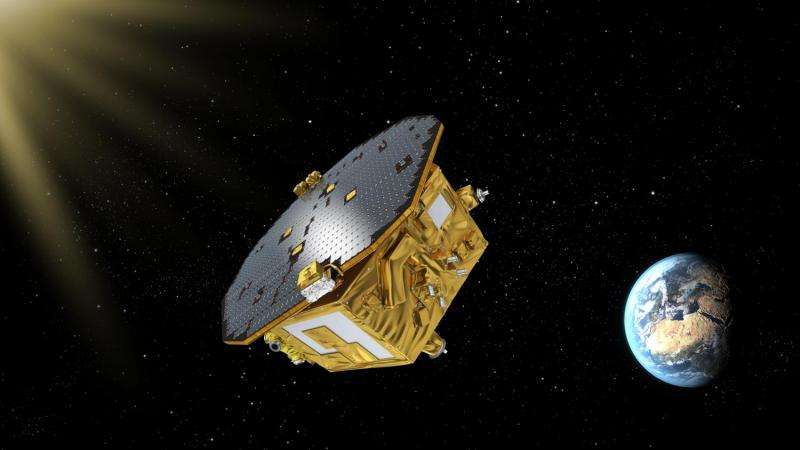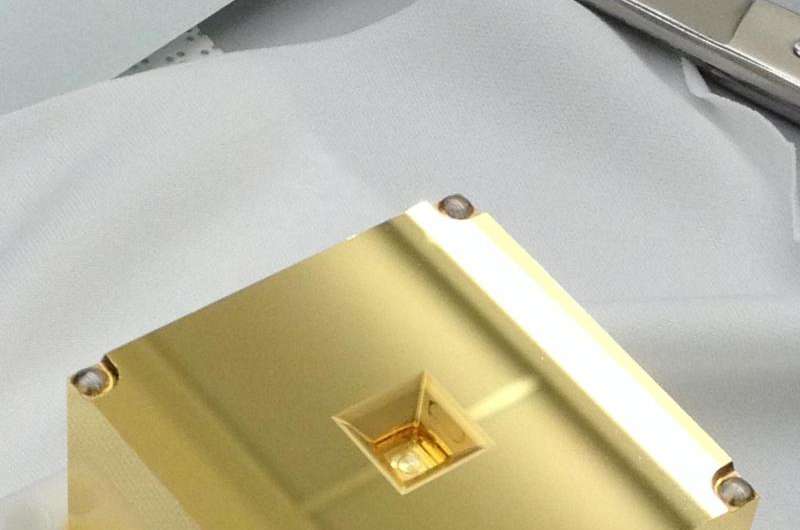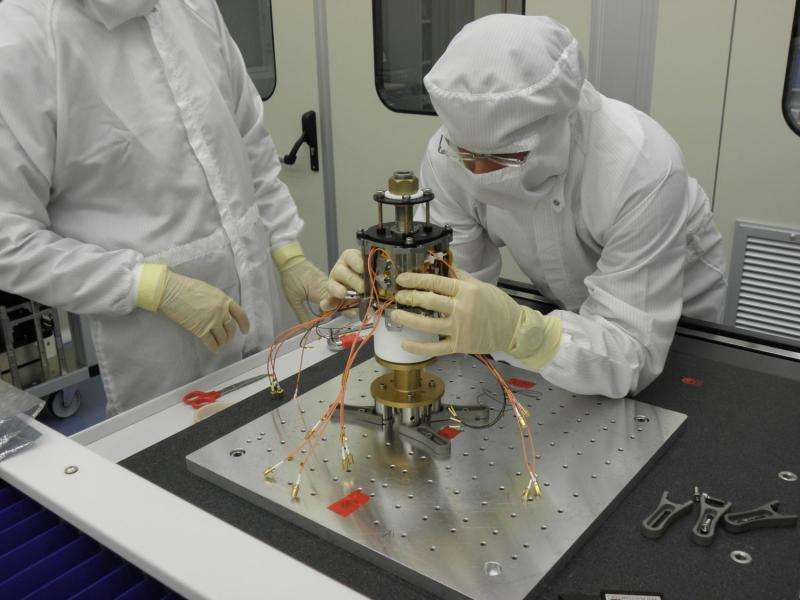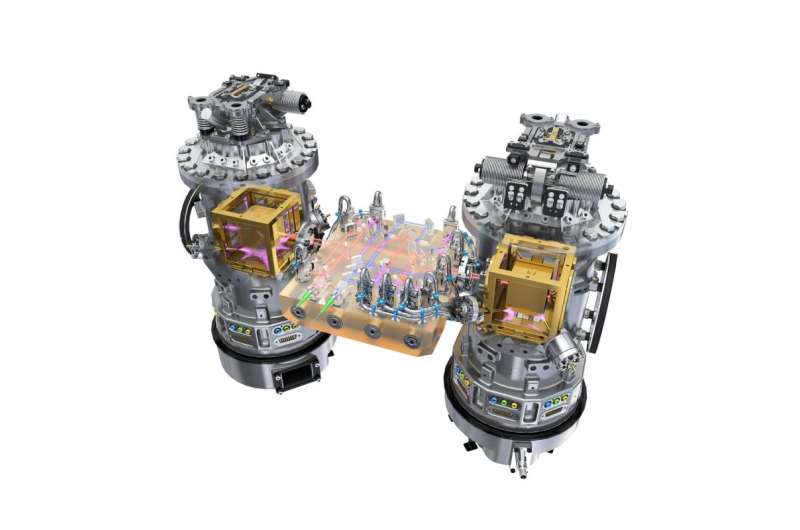First locks released from Lisa Pathfinder's cubes

Today, the lock fingers that kept the two test masses on LISA Pathfinder secure during the launch and cruise phase were successfully unlocked. As planned, the two cubes are still attached to the spacecraft via an additional mechanism that will hold them in place until mid February, as the teams carry on with the spacecraft and payload commissioning.
Tests on LISA Pathfinder are proceeding on schedule. The spacecraft completed its six-week journey in space, reaching its operational location in orbit around the Lagrange point L1 on 22 January 2016.
With the spacecraft settling into its new home, teams from ESA, Airbus Defence and Space (the prime contractor) and the institutes that provided the payload hardware continue to perform tests on the various systems, subsystems and instruments in preparation for when science operations will begin on 1 March.
At the centre of the spacecraft is the LISA Technology Package, which houses the two test masses that will be put in the most precise free-fall motion ever obtained in space. The position and attitude of these two identical gold-platinum cubes is monitored by a laser interferometer to estimate how much their motion is affected by other forces beyond gravity.
On 13 January, the laser was the first element of the science payload to be switched on, and preliminary measurements indicate that its performance is exceptionally good.

But it will be another few weeks before everything is ready to begin the science phase of this mission.
"During operations on ground, launch and cruise, each cube was held in position by eight launch lock fingers pressing the cube's eight corners," explains César García Marirrodriga, ESA's LISA Pathfinder project manager.
"Today, we successfully pulled back the lock fingers, handing the cubes over to the Grabbing, Positioning and Release Mechanism (GPRM) – these are additional mechanical elements that are softly holding the two opposite faces of each cube," he adds.

The release of the test masses is a crucial procedure for operating the mission, so it was designed in two steps.
First, the launch lock fingers are retracted, simultaneously opening a gate valve to vent the interior of the inertial sensors and pump residual gas molecules out to space. Recreating a high vacuum environment around the test masses will take a couple of weeks. Second, the GPRM will be retracted from one of the cubes on 15 February, and on the following day from the other one. When the GPRM is retracted, the test masses will no longer be in mechanical contact with the spacecraft, freely floating inside their housing.
The cubes measure 46 mm across and are about 4 mm away from the walls of their respective housing. In order to place them correctly, the mechanism must release each cube with a positional accuracy of approximately 200 μm with respect to the geometrical centre in all three directions. To avoid reaching any of the walls, the masses must be released with a velocity of less than 5 μm/s, or 18 mm/h, meaning that it would take them about a quarter of an hour to cover the space separating them from the surrounding walls.

"We are excited about the final test mass release, because the minute forces and velocities involved could not be fully tested on ground: it was not physically possible in the presence of Earth's gravity," says Hans Rozemeijer, LISA Pathfinder payload engineer.
"In space missions we normally test what we will fly, and then we fly what we tested, but sometimes the ground conditions simply do not let us fulfil this paradigm," he adds.
Immediately after the GPRM is released, the teams will apply electrostatic forces to the cubes using the electrodes in their housings to move them and make them follow the spacecraft. Over the following days, they will gradually reduce the intensity of the electrostatic force until eventually no force is applied to the masses, and the spacecraft will start moving around one of the free-falling cubes. This is the nominal operating mode for the science phase of LISA Pathfinder, and it will be first activated on 23 February.
Provided by European Space Agency


















